Laissez les bon temps rouler! Let the good times roll!
Welcome to New Orleans, affectionately referred to by locals as N’awlins or The Big Easy. It’s one of a handful of U.S cities that are utterly distinctive. It has its own look and feel, attitude and vibe.
People love to visit New Orleans. That’s why it’s annually one of America’s top convention destinations.
Of course, Hurricane Katrina in 2005 inundated 80 percent of the city; within a year, the city lost 90,000 jobs and half its population. The good news is that damage to the main visitor areas was minimal, and you won’t see Katrina’s effects there. It’s as safe to visit now as it was before Katrina.
Why visit this hot, humid city on the Mississippi River? The Big Easy is a heady brew combining these attributes:
- History: New Orleans combines the influence of French, African, Caribbean and American cultures. It was founded by the French in 1718 and has flown several flags since then. It’s been U.S. territory since the Louisiana Purchase in 1803. Its growth has been fueled by its port status; it’s just upstream from the mouth of the Mississippi. Despite Katrina’s devastation, it’s still one of the nation’s busiest ports.
- Architecture: New Orleans, especially the French Quarter and Garden District, has a look all its own, as you can see from the accompanying photos and as you’ll discover when you stroll through the Quarter.
- Music: The Big Easy is famous for jazz. What other city would name its airport for a jazz musician (Louis Armstrong)?
- Food: New Orleans is one of the top U.S. cities for foodies, with its own cuisine mixing Creole, Cajun and French influences. You’ll eat well here!
- Shopping: The French Quarter is loaded with shops and galleries catering to almost any taste.
- Night life: This is a city that really knows how to party. Between the food, the music and copious amounts of alcohol, The Big Easy is obsessed with showing visitors a good time. Raunchy Bourbon Street is famous for bars, strip clubs and crowds of tipsy tourists toting drinks outside.
A French Quarter tour
In this post, we’ll focus on the French Quarter, which is where you’ll want to spend your time, with maybe a foray into the Garden District. The Quarter is packed with things to see and do — more than I can possibly cover here. As a result, I’ve provided several links to help you plan your visit to The Big Easy.
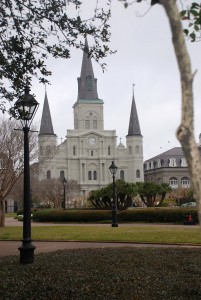
If you’re a first-time visitor, a good way to begin is with a guided tour. With help from Google, you’ll find a large variety of offerings. The oldest and highest-rated tour company is Tours by Isabelle. Go to (www.toursbyisabelle.com).
Whether or not you opt for a tour, you’ll want to take a walking tour of the French Quarter. Parking is tight (and expensive), so start early. Your first stop should be Jackson Square, the original heart of the city. Across the square is St. Louis Cathedral, oldest cathedral in the country. Flanking the cathedral are other historic buildings. Begin across Decatur St. at the French Market with café au lait and beignets (deep-fried pastries covered in powdered sugar). You might want to climb the levee behind the French Market to watch river traffic. It’s a bit disconcerting to see that the river level is higher than the land. (Half of New Orleans is below sea level.)
Then set off for Jackson Square. If you’d like a slower-paced tour in a horse-drawn carriage, you’ll find them lined up across Decatur St. from the French Market. As you stroll around the square, you’ll see several portrait artists who can create a personalized Big Easy souvenir.
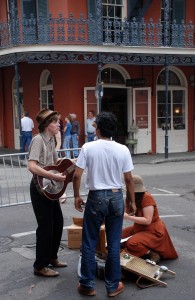
Before leaving home, print a copy of the French Quarter walking tour map put out by the city’s convention and visitor bureau. It will give you a better description of the Quarter’s points of interest than my space allows. Go to www.neworleanscvb.com/meeting-planners/marketing-resources/fq-walking-map/ My favorite street for walking is Royal St., with its great architecture, shops and street musicians. For a nice video on Royal St.. street musicians, go to www.youtube.com/watch?v=B_xo56CpxHw — you may have to copy this link and paste it into your browser.
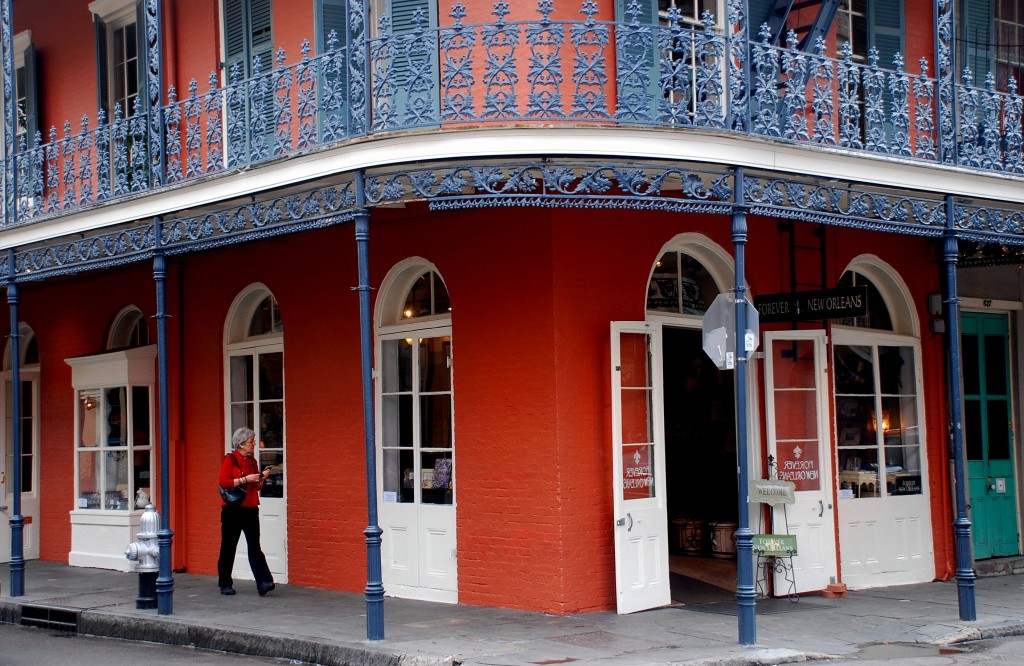
As you walk through the Quarter, you may be accosted by street hustlers and panhandlers. It’s not as bad as San Francisco, but it can be annoying. Consider it an integral part of local color.
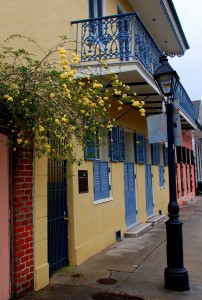
Food in The Big Easy
Chances are, all that walking has made you hungry. Good news . . . you’ve come to the right place! I suppose it’s possible to get a bad meal in New Orleans, but it’s unlikely. This is where established and aspiring chefs flock to create some of the most innovative and satisfying plates of food you’ll ever find.. The places I always hit when I’m in The Big Easy are Acme Oyster House, Mother’s (po’ boys), Central Grocery (Italian muffaletta sandwiches) and the Gumbo Shop. All are casual, reasonably priced (but not cheap) and wildly popular.
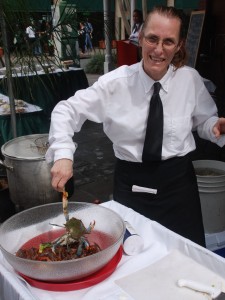
Want something more high-end? You’ll find some of the country’s finest restaurants here. If you’d like to eat at Antoine’s, Arnaud’s, Commander’s Palace (Garden District) or Galatoire’s, you’ll need three things – a reservation, a jacket, and a healthy balance on your credit card. For a guide to New Orleans cuisine, go to www.neworleansonline.com/neworleans/cuisine/. For a guide to French Quarter restaurants, go to www.neworleansonline.com/neworleans/fq/fqrestaurants.html
Ready to party?
I’m not much help here, being a non-drinker and confirmed stick-in-the-mud. You’ll find a great selection of bars and nightclubs along Bourbon St. where you can sample a Ramos gin fizz, Hurricane, or Sazerac.
This web site contains a guide to French Quarter bars: www.neworleansonline.com/neworleans/nightlife/nightlife.php?neighborhood
Locals recommend Frenchman St. at the downriver end of the French Quarter for nightlife and music. Here’s a guide: www.bigboytravel.com/louisiana/neworleans/frenchmenstreet/
Outside the French Quarter
A great short excursion is to take the St. Charles St. street car to the Garden District. This is the “Streetcar Named Desire” immortalized by Tennessee Williams.
The Garden District contains hundreds of gorgeous homes, set among moss-draped oak trees. Take a walking tour that includes the interesting Lafayette Cemetery. (Because the water table is so close to the surface, nobody gets buried in New Orleans; instead, the crypts are above-ground.)
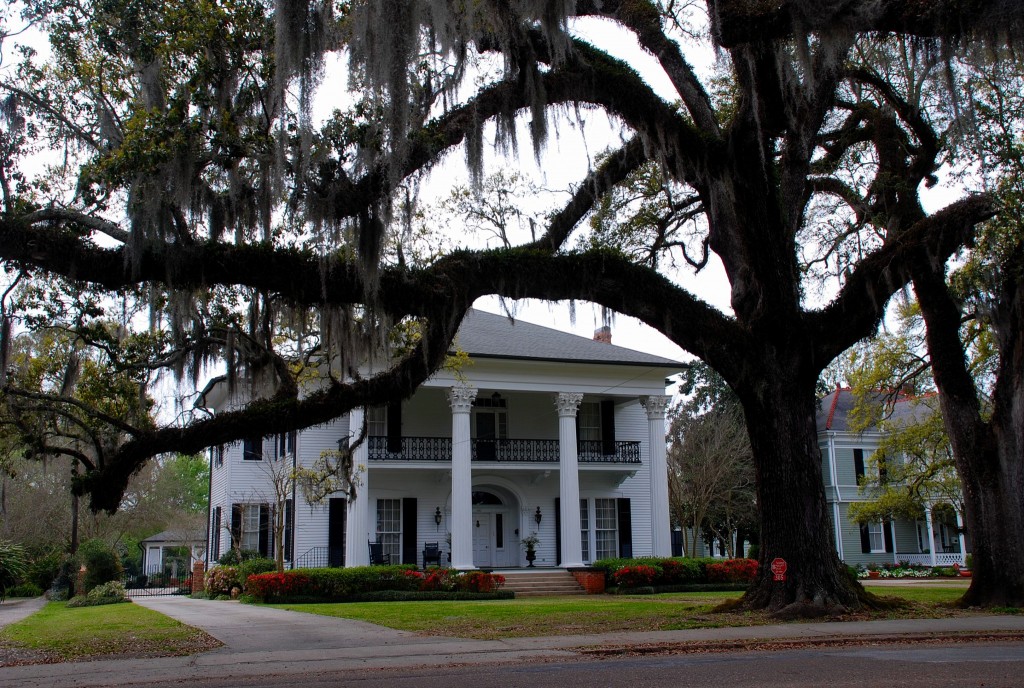
Here’s a walking tour guide: www.bigboytravel.com/louisiana/neworleans/gardendistrictwalkingtour/
Want to see some of Louisiana outside The Big Easy? The three most popular excursions are Cajun Country (around Lafayette), plantation tours (upriver toward Baton Rouge), and swamp tours (both east and west). My own preference is the swamp tour. I highly recommend Honey Island Swamp Tours, which runs ecology-based tours near Slidell. For information, go to www.honeyislandswamp.com/
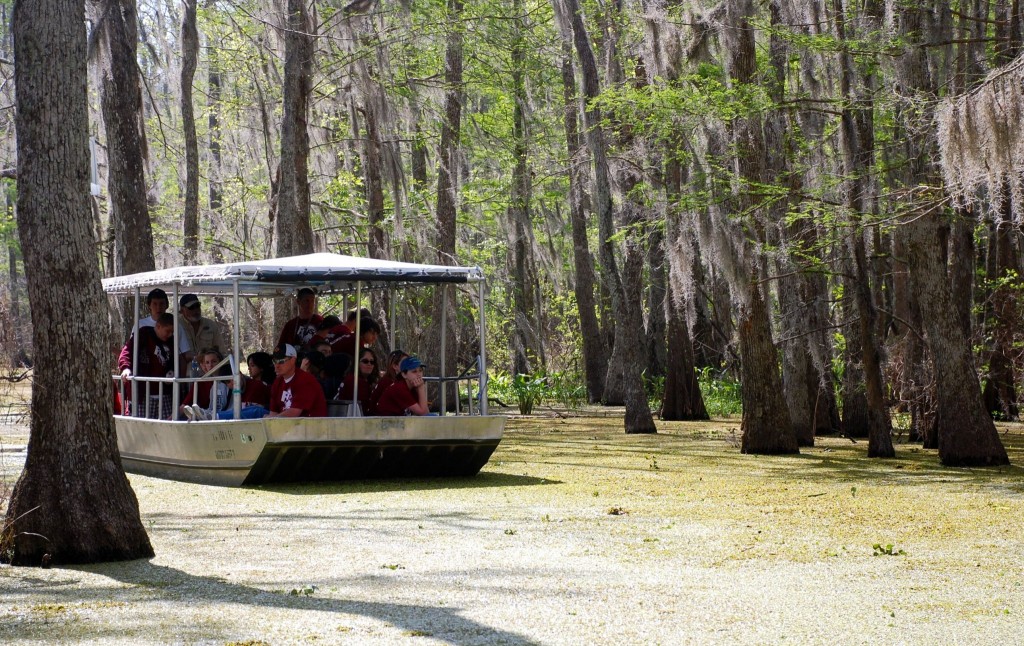
There’s a plethora of tour choices. Your hotel can provide recommendations, or you can spend some quality time with Google;
Logistics
Allow at least three days for a visit to the Big Easy. Add more time for excursions outside the city. Louis Armstrong Airport is west of the city in Jefferson Parish. (Louisiana has parishes rather than counties.) I-10 will take you right to the French Quarter. Parking is a challenge; expect to spend money. I’ve had good luck parking off Decatur St. just upriver from Jackson Square.
When to come? The Big Easy is the Big Sweatbox in the summer, with some days reaching the 100-100 level (100 degrees + 100 percent humidity). Spring and fall are mild and pleasant. Winter is cool, but not cold. Mardi Gras is in February, and azaleas bloom in March.

